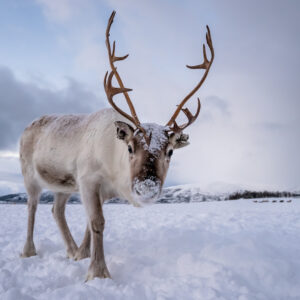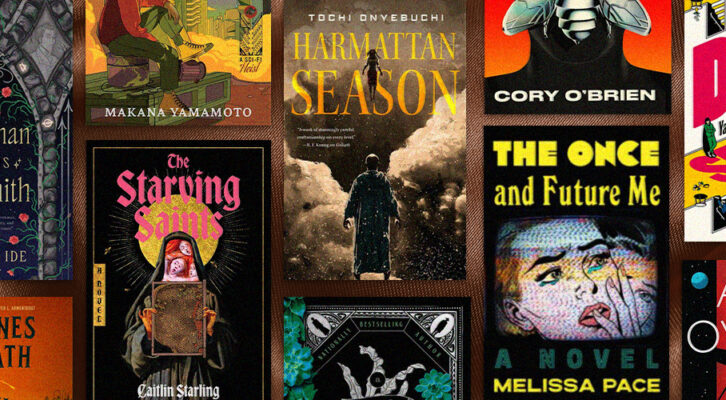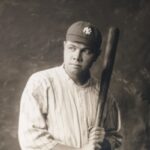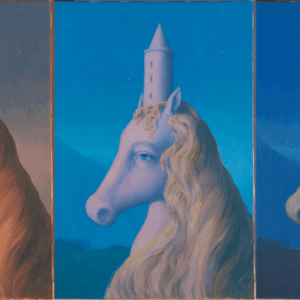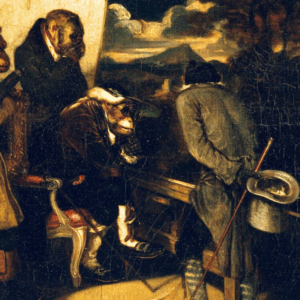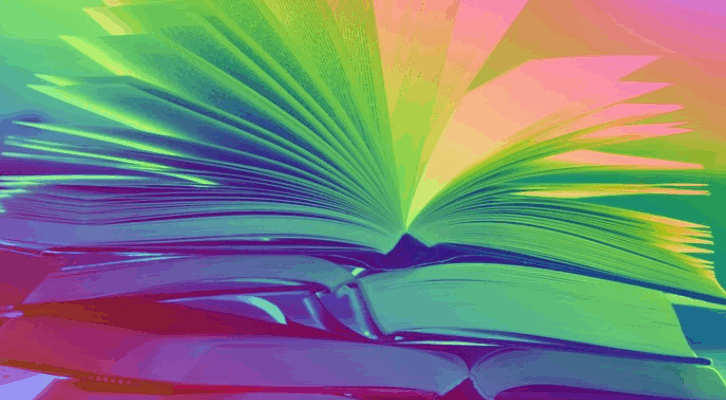
Why Drag Queen Story Hour Matters
Nina West on How Her Own Love of Reading Led to a Career in Drag and Literature
In the world of drag, reading is fundamental. It’s one of those great lessons from the documentary classic Paris Is Burning, and reading has also found its way into our lexicon thanks to the pop culture juggernaut RuPaul’s Drag Race. But in this case, I am not actually referring to the iconic queer art of throwing shade, but rather the physical act of reading…a book. For me, reading has always been something that I have loved and treasured, and I would safely bet that my love for reading has made me a staunch defender of Drag Queen Story Hours far and wide. I think for many people who read, there is a desire to find an escape and also a need to be found.
My love of reading came at a fairly young age. Every adult in my life seemed to always have a book in their hands, and it was powerful to see. My grandmother Barbara Levitt always read Mary Higgins Clark mysteries. My grandfather Bob Levitt preferred political memoirs or, from time to time, a Clive Cussler. Dad could often be found poring over the newspaper in the morning and a John Grisham in the evening. To this day, Mom loves a good historical biography. And her mother, my Grandma Peggy, read all the time and was a librarian. New worlds of adventure exist in the pages of books, and I knew I was always one page away from the next great love of my life.
Books gave me the opportunity to redeem any hope that I had for a healthy relationship with not only myself but the outside world.
Reading provided an escape from the life that I knew. When I was eight or nine, my parents separated. During this time, my sisters and I lived mainly with our mom. On weekends we would visit our dad. Oftentimes, when it was just my dad and me, we would go to the bookstore. Sometimes we would go to library sales and see what treasures we could unearth and add to our collections. When I was a kid, those books were some of the most sacred books I owned because they represented time with my dad. And during the scary season when your parents’ marriage is over, it’s natural to look for an escape. I realized the escape I longed for was at my fingertips in the books I brought home—and, even more important than an escape, they were filled with hope.
When I started middle school, I walked to North Canton Public Library after school and waited for my mom to pick me up. Who needed a babysitter when you had public libraries? At the library, I discovered new questions and answers to topics I wanted to learn about. Sometimes things immediately sparked my interest just by scanning Dewey’s decimals or walking down the aisles. I fondly remember going through a period of needing to know everything about animation. From Friz Freleng to Chuck Jones and everything in between. Then there was the period of my life when I wanted to get my hands on anything Encyclopedia Brown-related. And the library had magazine subscriptions; I may have hated cats, but this didn’t stop me from turning page after page of Cat Fancy.
As I was growing up, I recognized that there was something different about me. I may not have known what that difference was, but I recognized that there was something about me that I felt like I needed to hide. At a time when I was becoming quieter and more insular, I was able to let my mind run free through the pages of books. I was able to unleash my imagination and populate my own fantastical worlds that sprung off the spines of the books. What was truly terrifying was coming to an understanding that I was different, not having the words to describe this difference, and then not having the ability to see my kind of difference in the world. It felt isolating. I didn’t have anyone to turn to, no one to confide in, but I had books.
When I made it to high school and began to have more of an understanding of what my difference—my homosexuality—actually was, I craved the truth and the knowledge held within the pages of books. I remember going to a Borders bookstore in Akron, Ohio, with my friend Laura and getting lost in the shelves of the lesbian-and-gay-books section, where I felt a little more like myself. There was power in being able to stand among the spines and bindings of books like Am I Blue?: Coming Out from the Silence, Andrew Sullivan’s Virtually Normal: An Argument About Homosexuality, or even The Joy of Gay Sex: An Intimate Guide for Gay Men to the Pleasures of a Gay Lifestyle. It wasn’t like I was looking for answers about how to have sex or how to find sexual partners, but being able to be among books that showed me who I was felt empowering. At that time, every pop culture depiction of gay males featured someone dying of AIDS, a sex worker, or someone addicted to drugs. In books I was able to find real examples of people living healthy, fulfilled, happy lives and being out as their authentic selves.
Eventually I came into my own queerness. I created and designed a drag character who represented the person I was and the person I could become. She was a little bit like some of my favorite characters I’d grown up reading about. Nina possessed a little bit of P.L. Travers’s Mary Poppins, some of Louisa May Alcott’s Jo March, and maybe a lot of Roald Dahl’s Grand High Witch. The point is that classic literature, memoirs, and stories have directly impacted my ability to have a successful life as a queer man. Books gave me the opportunity to redeem any hope that I had for a healthy relationship with not only myself but the outside world.
How does this all relate to Drag Story Hour? In 2015 the Supreme Court of the United States passed marriage equality for all. This directly changed how we saw ourselves as LGBTQIA+ Americans. It gave us the power to envision our lives as more fulfilled. It allowed us to define ourselves on terms that felt closer to equal. It felt as though we were finally being invited to the party. When marriage equality became the law of the land, many of my friends were whipped into a frenzy of planning their own legal weddings and families.
With family planning, LGBTQIA+ people were having conversations about raising children and the desired entertainment that spoke to their values. I don’t know definitively when the first Drag Story Hour occurred in the United States, but I can say comfortably—and through the power of Google—that Michelle Tea held the first Drag Story Hour in San Francisco in 2015. The goal of this event, like many others since, was to promote reading and celebrate diversity.
In 2016 I held my very first Drag Queen Story Hour, reading books to children and their families at a library in Westerville, Ohio. I had initially attempted to have my first story time at the Columbus Metropolitan Library’s main branch, which is known as one of the foremost library institutions in the country. I was disappointed to find out that they were concerned about this type of programming and were not interested in having conversations surrounding the topic. The no from the Columbus Metropolitan Library motivated me. I passionately felt that my friends and their families desired this kind of programming. As a result, I sought out other options, and I was thrilled when the Westerville Public Library was willing to host the event.
The initial rejection should have been a sign. I should have taken the Columbus Metropolitan Library’s no as an indicator that there would be some controversy surrounding my event. I think there will always be a part of me that is a little bit naive when looking at the world. I want to believe that there is good in people, and I want to believe that we all see the best in one another. I think this naivete has gotten me into trouble over the years, but I also believe it has afforded me great opportunities. When I embarked on this story time opportunity, I underestimated the number of people who would not be thrilled by the idea of a drag queen reading a picture book to kids.
As the event got closer, I shifted my primary goals. I wanted to make sure I was the best representative I could possibly be for families in this space, and I wanted to ensure everyone’s safety.
And then, through all that, I recognized that the work had to be intentional. Don’t be provocative. Don’t be too risqué. I had to take what I had learned over the years of working microphones late at night in gay bars and apply that here. My own flexibility and ability to read an audience would really be of utmost value in this new venture. How different would a room of four- to ten-year-olds be from a room of eighteen- to thirty-year-olds? It turns out, not much! Both audiences can struggle with attentiveness, want to be led, and ultimately just want to have fun.
It was an opportunity for me to forge an extension of my drag identity that was more encompassing to audiences that were far more diverse.
My job at that moment was to instill a powerful message and inspire kids and their families to live lives of acceptance. I think people oftentimes walk into these spaces trying to overcompensate so that the rest of the community can somehow find its way in or make an accommodation for these spaces or allow them to exist. I know that might be an absolutely insane thought that doesn’t seem to align with the message of building community, but for people who lead this charge of working in these family spaces, there is some sacrifice to ensure that they’re not being extra. Be a larger-than-life drag queen, but keep it family-friendly.
My intentions were to read a couple of children’s picture books and do a fun craft. Our time together would also be accompanied by a sing-along and dance party. I selected Red: A Crayon’s Story, written and illustrated by Michael Hall, to read. I love how this book demonstrates the idea of difference and labels. My book selection for my first story time felt really important—it represented a statement about who I was and the Drag Queen Story Hour that I wanted to lead. It was an opportunity for me to forge an extension of my drag identity that was more encompassing to audiences that were far more diverse than the eighteen-and-over crowd attending my shows at night. This was my opportunity to walk into a space that I felt comfortable in, because I am just a big kid at heart. This event felt like a natural progression for my career, and I was ready for the evolution of Nina and for the chance to welcome something new into my life.
My first story time went off without a hitch. Some protesters showed up, but we hired security for the event so everyone would be safe. Despite the protestors, we ran a successful event where families could exhale and fully be themselves in a space that was supportive and positive. Over the next couple years, I read at a few Drag Queen Story Hours. These story times inspired me to do my very own children’s music EP, titled Drag Is Magic. I released the EP after my time on season eleven of RuPaul’s Drag Race ended. I was—and still am—convinced that drag artists deserve to have their careers exist in multitudes. The art form is complex, as are the creators, and this art can be used to speak to people on a variety of levels. I pushed this to see how far I could go with it, maintaining that my creation, Nina West, could exist in bars at 1:00 a.m. and in libraries at 10:00 a.m. and possess variation in presentation and context.
In the summer of 2019, I was approached by a publisher to write a children’s book, something I didn’t know could be a possibility. I connected with a book agent and an idea for a picture book. Soon enough I had a book deal and an illustrator, and I was off to the races.
During this time, large media movers and shakers agreed that drag could be a wonderful tool for social and emotional entertainment for children and families. My conversations with them for some large projects began in late 2019, and by May 2020, I was doing incredible, impactful work with Nickelodeon and Nick Jr. and their popular show Blue’s Clues, as well as a Pride song called “The Meaning of Pride.” I hosted two Pride specials for Disney. These opportunities were moving the needle and encouraging conversations, and they were happening while we were all sitting at home during the COVID lockdown.
Simultaneously during the pandemic, prior to some of these big moments, I started to fully focus my attention on doing Story Time with Nina. I needed a way to invest my energy and talent while sitting at home. I was a burgeoning children’s author, so this gave me a chance to really study and celebrate the genre all while doing drag. I invited families to join a twenty-minute story time on Instagram Live. After reading I sang a song or two and suggested a craft for families to do together. The first story time went smoothly, and it felt like I had found that “thing” I needed to satisfy my creative energy.
__________________________________
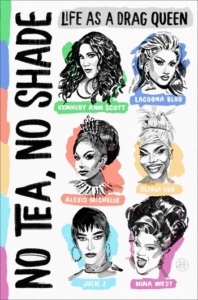
Excerpted from No Tea, No Shade: Life as a Drag Queen by Kennedy Ann Scott, Lagoona Bloo, Alexis Michelle, Olivia Lux, Julie J, and Nina West. Published by HarperOne, an imprint of HarperCollins Publishers. Copyright © 2025 HarperCollins.
Nina West
Nina West is a veritable “every-queen”—an actor, singer/songwriter, producer, author, host, and activist. Nina appeared on RuPaul’s Drag Race, released chart-topping music, been featured as a voice actor in several high profile projects, toured the nation in the 20th anniversary production of Broadway's Hairspray, and even performed with Kermit the Frog. She has partnered with Nickelodeon, Proctor and Gamble, Paramount, Disney, and the queen of kindess, Dolly Parton. Nina founded The Nina West Foundation and works to amplify and uplift LGBTQIA+ voices, mental health awareness, and equality. She received an honorary doctorate from Columbus College of Art and Design.









